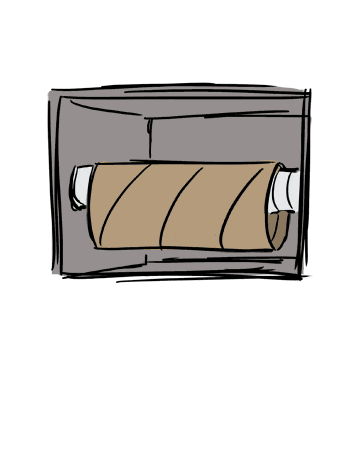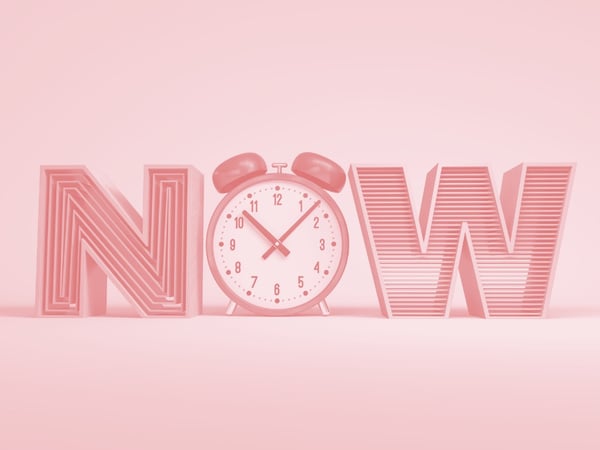The 2-minute rule was coined by productivity consultant, David Allen, in his book Getting Things Done (GTD), now popularly known as the GTD methodology. The GTD method is complex in its entirety, but its general purpose is to create a “bias for action”. In other words, it helps you to stop procrastinating on priority tasks.
Now, priority tasks are often intricate, time-consuming, and sometimes have deadlines. These are not the tasks we’re talking about today. The tasks I’m more interested in productivity-hacking (yes, that’s a verb now) are the smaller, simpler tasks that often require minimal physical and mental effort. However, if you’re interested in learning productivity tips for your priority tasks, you can read our article on procrastivity and task avoidance.
What are “2-minute tasks”?
Before we get down to the nitty gritty of the 2-minute rule, I’ll start with examples of the smaller, simpler tasks this technique applies to.

Examples of relatable "2-minute tasks":
- Replying “yes” or “no” to a text message
- Putting Thank You cards in the mailbox
- Taking medication
- Paying an online bill
- Picking up that Amazon box from my dining room floor that I’ve been stepping around for 3 weeks and just putting it in the recycling bin already (which is just a hypothetical example, of course...)
- Replacing the empty toilet paper roll
All of those tasks have something in common: unless external forces interfere with them, each task takes 2 minutes or less from start to finish - give or take 15 seconds.
Does the 2-minute rule work for everyone?
The idea behind The 2-Minute Rule is simple: If a task takes two minutes (or less) to finish, you should drop everything and do it right now. It seems pretty straightforward, but can this work for neurodiverse minds, too? Because, this is how things usually go for me when I encounter a 2-minute task:
2-minute task example: replying to an email invitation
- Ooo! An invite! All I have to do is check my calendar and then click "going" or "not going". Easy peasy.
- But! Before I RSVP, I need to add it to my pristine (and neglected) planner!
- Maybe I should put away that old coffee mug before replying, too. It’s distracting me.
- Holy unwashed dishes! I need to clean these! This will just take a moment…
- Hold up - doesn't my favorite podcast have a new episode out?
- Wait, where are my earbuds??
Aaaand... now 40 minutes have passed and I still haven't done that "quick" task.
Whoops.

The truth is - most productivity hacks aren’t specifically designed to work around our unique neurodiverse struggles – and it’s not our fault! Like neurodiversity, productivity is a spectrum, and highly personal. Dr. George Sachs, a licensed child and adult psychologist with specializations in ADHD, Autism, and Cognitive Behavioral Therapy (CBT), recently spoke on the GTD method and ADHD during a live event on the Inflow app.
Some ADHD coaches recommend GTD; but for me, it's overwhelming and a lot to remember. I just wanted something simple, and that’s why I condensed it down to the three philosophies of deleting, doing it now, or delegating.
Sachs frequently encourages the ADHD community to modify or simplify techniques to better fit their neurodiverse needs. But - what exactly are the things we should consider about the ADHD brain when we’re modifying these techniques?
How ADHD can complicate the 2-minute rule
1. Executive dysfunction
Executive functions are cognitive skills managed by the neurotransmitter, dopamine (a key player in the brain’s reward system). It regulates the motivation to finish projects and drives the impulse to purchase a new planner (that will most likely go untouched), among other things. In essence, executive functions regulate our feelings and actions. Consequently, a dysfunction in these skills can cause dysregulated emotions (such as intense anxiety) and difficulty initiating tasks.
2. Organization and prioritization (of tasks)
With ADHD, everything can seem urgent. You either do it now or never. The tricky part with the 2-minute rule is you can inadvertently create a habit of “Procrastivity” in the guise of doing something important. Procrastivity is defined as: avoiding critical tasks by engaging in other necessary (but low-priority) tasks.
This could manifest as:
- Organizing digital folders instead of working on a big project with an upcoming deadline
- Redecorating your workspace and going on a full-blown shopping spree for pens and notebooks because it “helps you feel ready” before starting the task
- Making an aesthetically-pleasing spreadsheet that you swear you’re going to use for your priority tasks.
Additionally, procrastivity can be driven by emotional barriers. Maybe you’re not avoiding tasks on purpose - you may just need to sort through your feelings about the task you’re avoiding. David Allen refers to this as the “amygdala hijack”.
3. Perfectionism
ADHD Expert, Dr. Sharon Saline, Psy.D, says those with ADHD may find it difficult to start or complete tasks unless it’s done just right. This is typically done out of fear of disappointing other people’s expectations. For those with childhood trauma, this fear can also come from self-imposed standards brought on by years of never feeling “good enough”. To learn more about perfectionism and ADHD, check out this Inflow article.
Alternative productivity hacks to try
Maybe you’ve tried the 2-minute rule and it didn’t feel like a good fit; or maybe you’re hesitant to even consider trying it because of the above issues. Either way, you have options! The trick here is to take ownership of your chosen productivity hack - mold the technique to fit you - not the other way around. Review the 5 alternative techniques below, find one that speaks to your inner procrastinator, and make adjustments until it fits you.
1. Set up visual reminders
Place different timepieces around your workspace, bedroom, kitchen - even your bathroom. "Out of sight" is literally out of mind for many of us. That’s why you need visual reminders to keep you on track ...and a lot of them.
2. Identify your aversive tasks and pair them with dopamine
You know those boring, time-consuming tasks that are also really important? These are your aversive tasks… and I might have a trick that can make them a little less painless for you:
💡Pro Tip! Pair your aversive tasks with satisfying tasks.

This can fool your brain into thinking of your aversive tasks as “rewarding” or “good”. How, you ask? Your satisfying tasks provide a hit of dopamine. Coupling the dopamine-inducing task with an aversive one can trick the brain into associating dopamine with the aversive task.
3. Externalize your “urgent” thoughts
People with ADHD often struggle with retaining information, even during a short period of time (AKA “working memory”). Transferring urgent ideas and thoughts to paper as soon as they arise will ensure that they’re not lost forever. Plus, you won’t waste time draining your mental energy trying to remember “that one idea you had earlier”.
💡 Pro Tip! Keep a notepad in a visible spot in your workspace so you can jot down your urgent ideas as they arise. Keep your notes short and to the point! And - try to only look through your collection of beautiful scribbles after accomplishing a high-priority task.
4. Designate a container as your “Sunday basket” or “inbox”
The Sunday basket system was founded by professional organizer, Lisa Woodruff. It teaches you to group your mail, documents, or random notes accumulated during the day or week in one “basket” or box. Then, sort through your basket each Sunday, and prioritize everything in order of importance and urgency.
Similarly, George Sachs, PsyD. suggests using physical and/or digital inboxes for things like mail, desk supplies, and kitchen counter clutter. He also recommends placing a trash can near your inbox so you can get rid of unimportant items when you sort through them at the end of the week.
5. The 5-minute rule, the 15-minute rule, the 30-minute rule
Personally, the 2-minute rule gives me anxiety - I’m supposed to do The Thing and put a time limit on it!?
That’s why Dr. Sachs emphasizes the fluidity of the 2-minute rule when he shares this strategy with his ADHD clients. Whether your smaller tasks take longer than 2 minutes, or the 2-minute time constraint makes you antsy like me, you’re free to make it your own! Make it the 5-minute rule, the 15-minute rule, the 30-minute rule; whatever works best for you.
Final thoughts on productivity hacks
It’s not uncommon for ADHDers to have a love-hate relationship with productivity, and it’s often disheartening to discover that most popular productivity strategies don’t seem to work for us.
But know this: It’s okay that these productivity “hacks” don't work for your unique ADHD struggles. And as difficult as it may sound, we can all benefit from redefining our narrative around productivity. Your ADHD struggles are unique, so try to be gentle with yourself when exploring new tools or building habits. Take the time to explore what productivity means to you, and align it with your values. Whatever productivity hack you decide to try, keep this in mind:
You can be productive without sacrificing what’s important in your life, and that includes that unique, neurodiverse mind of yours.






.jpg)

